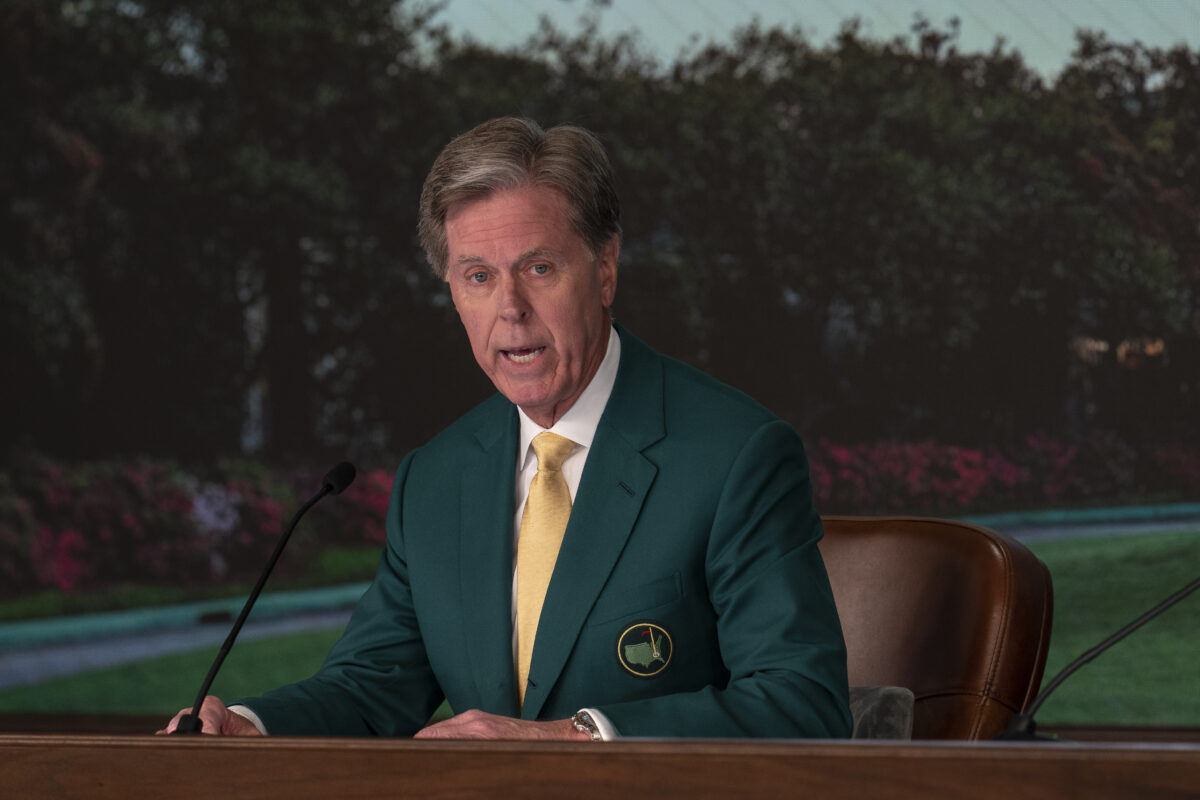AUGUSTA, Ga. — During his annual media appearance ahead of the 2024 Masters at Augusta National Golf Club on Wednesday, chairman Fred Ridley said the club supports the golf ball rollback spearheaded by the USGA and R&A in an effort to curb the growing distance problem in golf.
In his opening statements, Ridley talked about how for years the tournament was played at less than 7,000 yards, but noted this year’s yardage had extended to 7,555 yards. He also said one day this week the course could measure more than 7,600 yards.
The most notable comment the chairman made was that he doesn’t want the Masters to play more than 8,000 yards, but fears that may be the case in the future if distance isn’t diminished.
“I’ve said in the past that I hope we will not play the Masters at 8,000 yards. But that is likely to happen in the not too distant future under current standards,” said Ridley. “Accordingly, we support the decisions that have been made by the R&A and the USGA as they have addressed the impact of distance at all levels of the game.”
Last December the USGA and R&A announced they were changing how golf balls will be tested for conformity to reduce the effects of distance in the sport. Starting in 2028, for a golf ball to be deemed conforming and be legal for play, it will be tested using a robot that swings a titanium club at 125 mph and hits the ball on an 11-degree launch angle with 2,200 rpm of spin. The shot can not exceed the Overall Distance Standard (ODS) of 317 yards of combined carry distance and roll (with a 3-yard tolerance).
Currently, balls are at 120 mph with a launch angle of 10 degrees and 2,520 rpm of backspin, so the change increases the robot’s clubhead by 5 mph, increases the launch angle by 1 degree and decreases the spin rate by about 300 rpm.
Nearly every golf ball being sold today would go too far and fail the new test because manufacturers design their balls to go right to the current distance limits. Increasing the test speed by 5 mph and hitting shots at low spin rates and higher launch angles would make all of today’s balls go too far and become non-conforming. Balls that had previously been legal but failed the new test will be removed from the Conforming Ball list, making them illegal for official play starting Jan. 1, 2028.
According to Thomas Pagel, the USGA’s chief governance officer, using golf balls that pass the new test will result in a loss of distance, with the fastest-swinging players being affected the most and recreational golfers being affected the least.
Ridley said he hopes the PGA Tour and other golf tours and leagues will adopt the regulations and join Augusta National in its support of the USGA and R&A’s initiative.
“I certainly hope they will be, were they not it would cause a great deal of stress in the game it doesn’t need right now,” Ridley explained.
He also noted how, even if the regulations are implemented, other aspects of technology within the rules and the physicality and technical ability of the players will allow them to catch up and make up the difference in distance. Ridley doesn’t envision new tees closer to greens and he plans on “holding that 8,000-yard line.”
“We have some more room,” he added, “but we don’t have a lot.”
Distance has been a highly debated issue in golf – both the PGA Tour and LPGA immediately spoke out against the new regulations – and Augusta National’s support of the USGA and R&A’s efforts marks a significant step in the process to curb distance and make the game more sustainable.
[lawrence-auto-related count=4 category=451191917]














